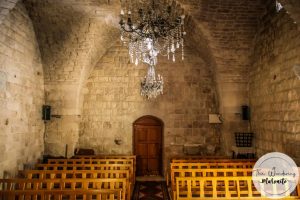Overview
Map
Other Details
كنيسة مار الياس القديمة
Mjaydel Jezzine
Jezzine
South
كنيسة مار الياس القديمة - المجيدلبْنيت سنة ١٨٠٤، وجُدّدت سنة ١٨٩٩ وسنة ١٩٩٩. البناء كناية عن عقدِ مْصالبِ ينتهي بحنية. تضمّ الكنيسة ثلاث لوحات: مار الياس ومار جرجس والعائلة المقدّسة من عمل خليل عقل تعود لأوائل القرن العشرين.The old church of St Elijah - El MjeidelThe church was built in 1804, and renewed in 1899 and 1999. The structure consists of a crossed vault ending with an apse. The church has three paintings by Khalil Akl from the beginning of the XXth century: St Elijah, St George and the Holy Famil
Visited 3412 times, 13 Visits today






















Reviews are disabled, but trackbacks and pingbacks are open.